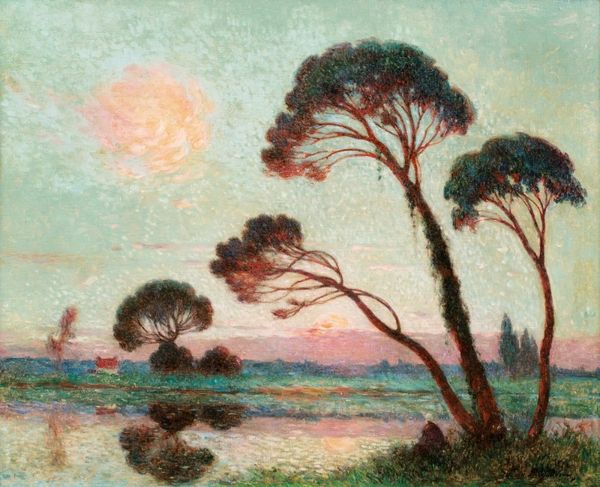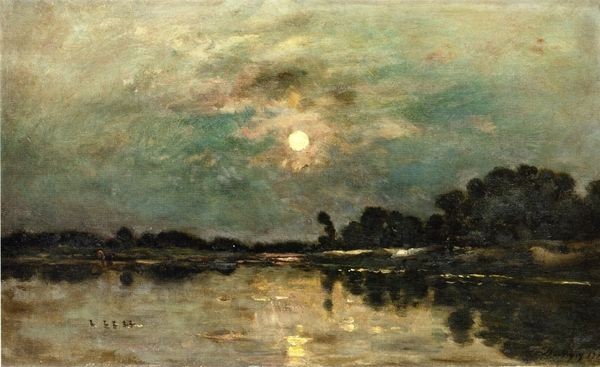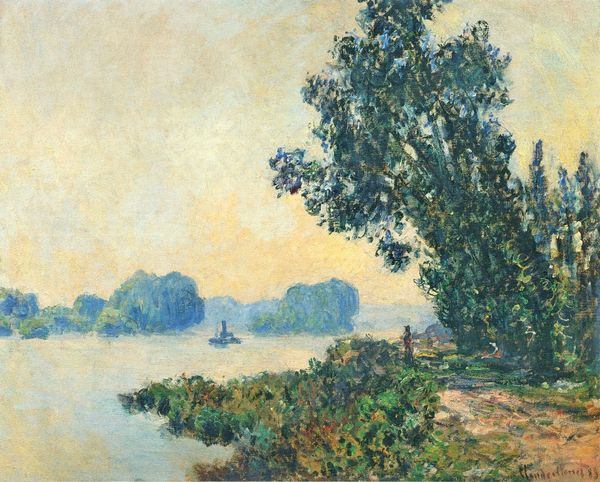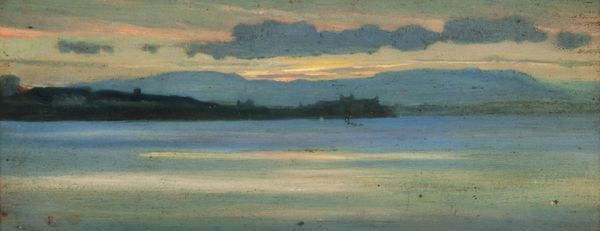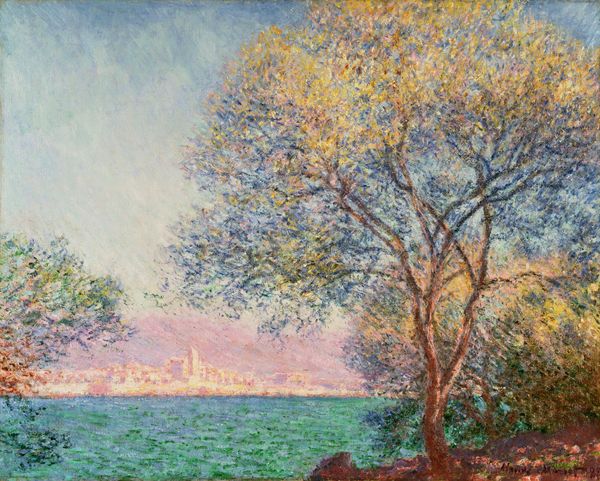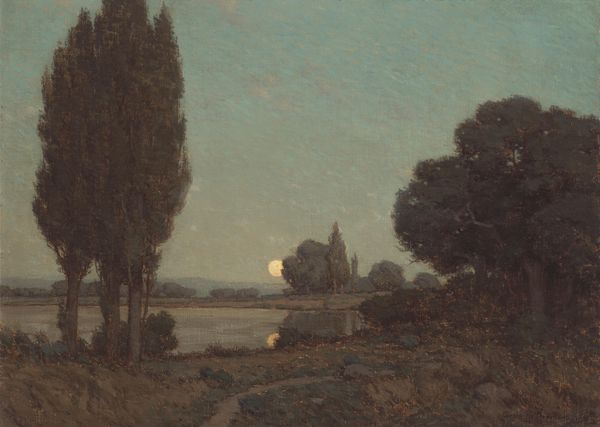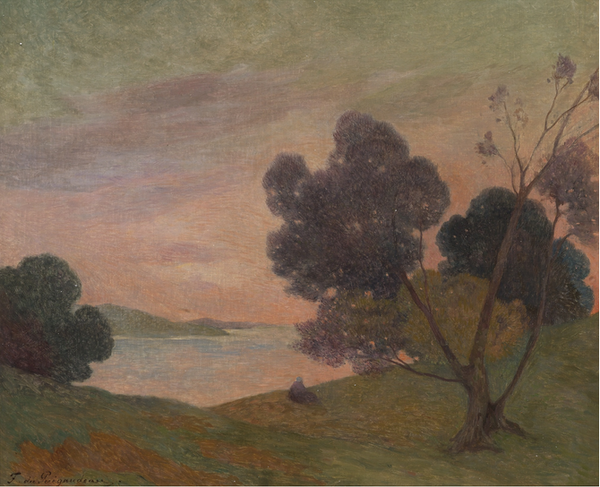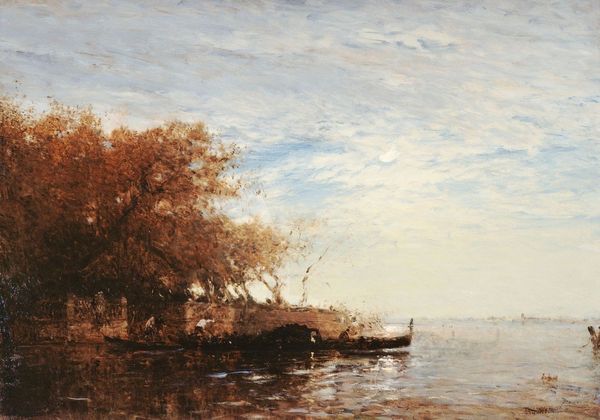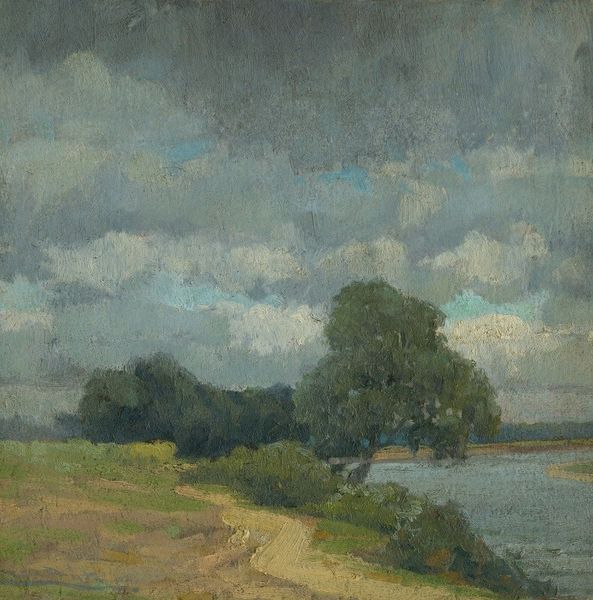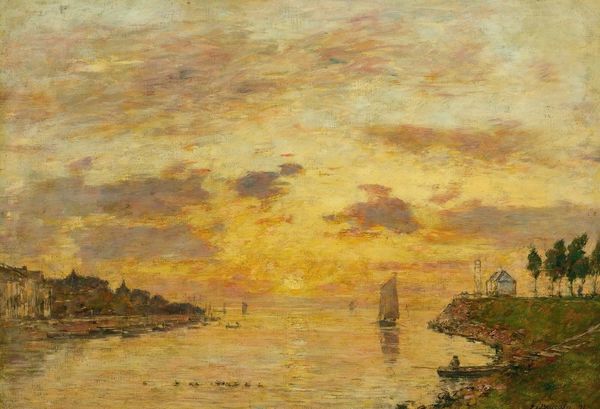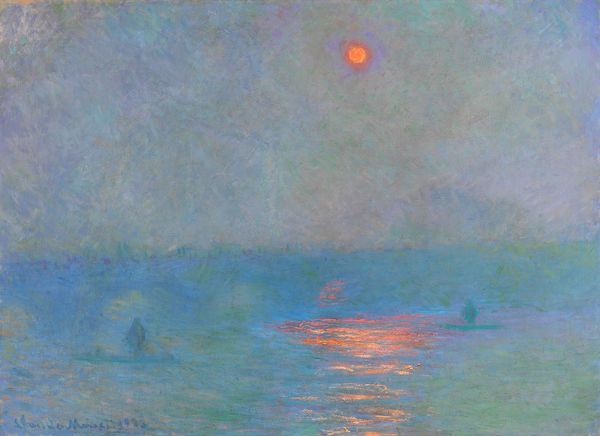
painting, plein-air, oil-paint
#
painting
#
impressionism
#
plein-air
#
oil-paint
#
landscape
#
impressionist landscape
#
nature
#
romanticism
#
seascape
#
abstraction
#
cityscape
#
nature
#
natural environment
Copyright: Public domain
Curator: Ferdinand du Puigaudeau's "The Moonlit River," offers a subtle dance of light and shadow, typical of the Impressionist landscape. What is your initial impression? Editor: It strikes me as a carefully constructed composition, a tripartite division almost. Sky, water, earth each occupying a distinct band. The chromatic harmony is quite subdued, primarily blues, greens and earth tones. The painting also feels somewhat unsettling in its serenity, a darkness veiled with calm. Curator: It's fascinating to consider this in light of Puigaudeau's life, a perpetual straddling of social classes and artistic styles. We see his artistic labor producing a canvas which reflects the landscape accessible, and his attempts to reproduce it. I would also be keen to know where it was painted, in France or during one of his sojourns further afield? I'm intrigued by the interplay of industrial labor with his vision. Editor: Agreed. It's quite impossible to overlook the way the formal qualities direct our reading here, no matter its provenance. Look at the relationship between that dominant tree on the right and the moon itself: framing and balancing. And notice how Puigaudeau employed short, broken brushstrokes, especially in the water. It shimmers but also conceals the underlying canvas. Curator: I would add it conceals the materiality while adding labor hours to it! His work certainly adds complexity to the impressionist and plein-air tradition by how much work went into conveying that supposed feeling of direct reproduction from nature, when we really only see the painting and its interpretation filtered through class concerns and available resources of the moment of its production. It makes one want to examine the pigment production, doesn't it? Editor: You bring up a crucial aspect – his process. His visible brushstrokes challenge conventional notions of artistic skill and intent to make copies of what surrounds him. How the structure subtly manipulates our vision to evoke a sense of something fleeting yet powerful, I would rather stick to this instead of going deeper in the production's history. It’s in that manipulation where Puigaudeau really asserts his formal control. Curator: The confluence of how something comes to exist also impacts meaning for many observers, it’s another level of awareness of both artist and materials and its cultural importance that shifts the artwork interpretation. Editor: Ultimately, I think what makes it resonant is Puigaudeau’s sophisticated manipulation of form, light, and space that communicates mood above everything. Curator: And it's that meeting point of labor, materials and form that speaks volumes, allowing for myriad readings beyond mere representation.
Comments
No comments
Be the first to comment and join the conversation on the ultimate creative platform.
